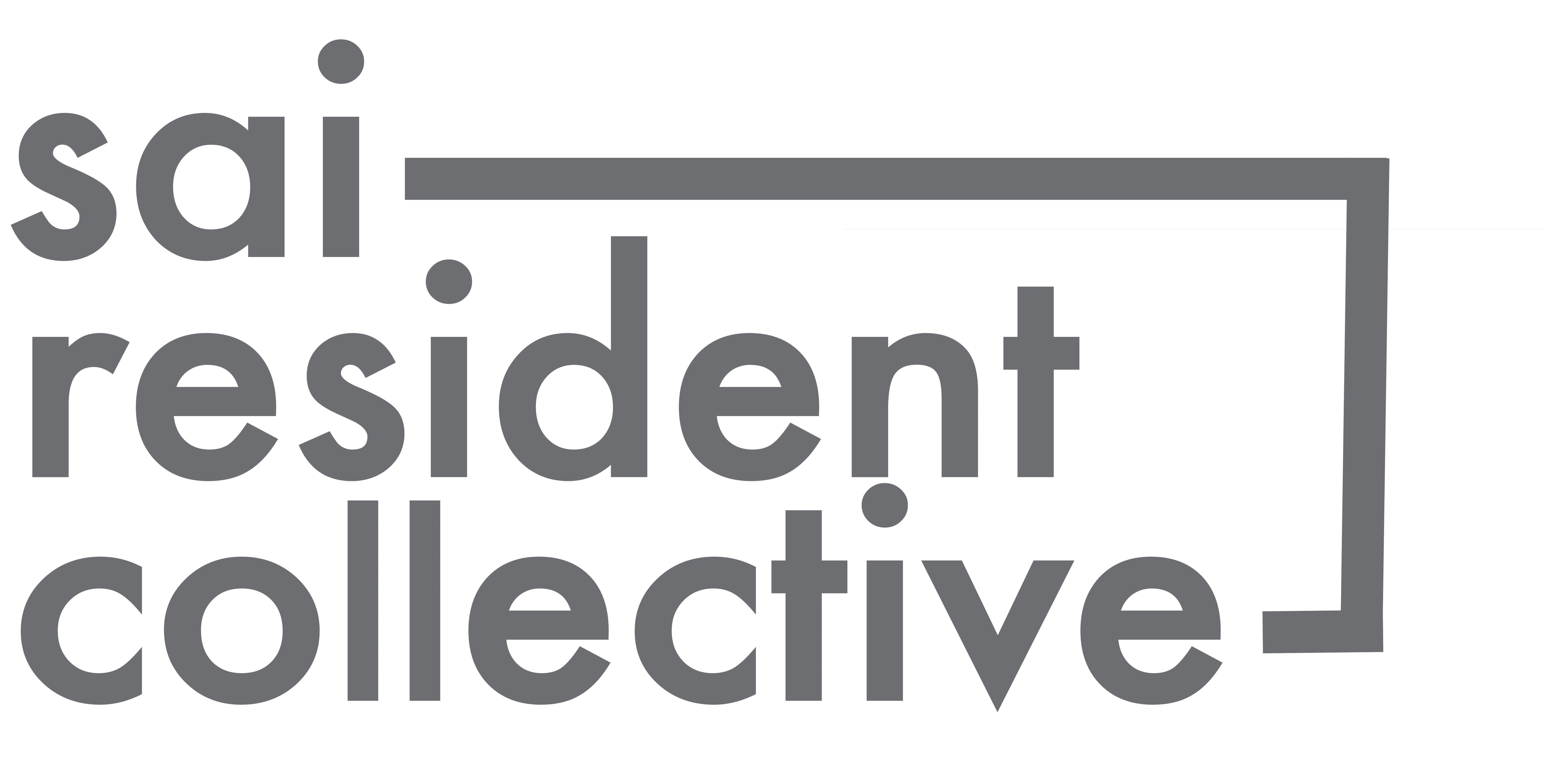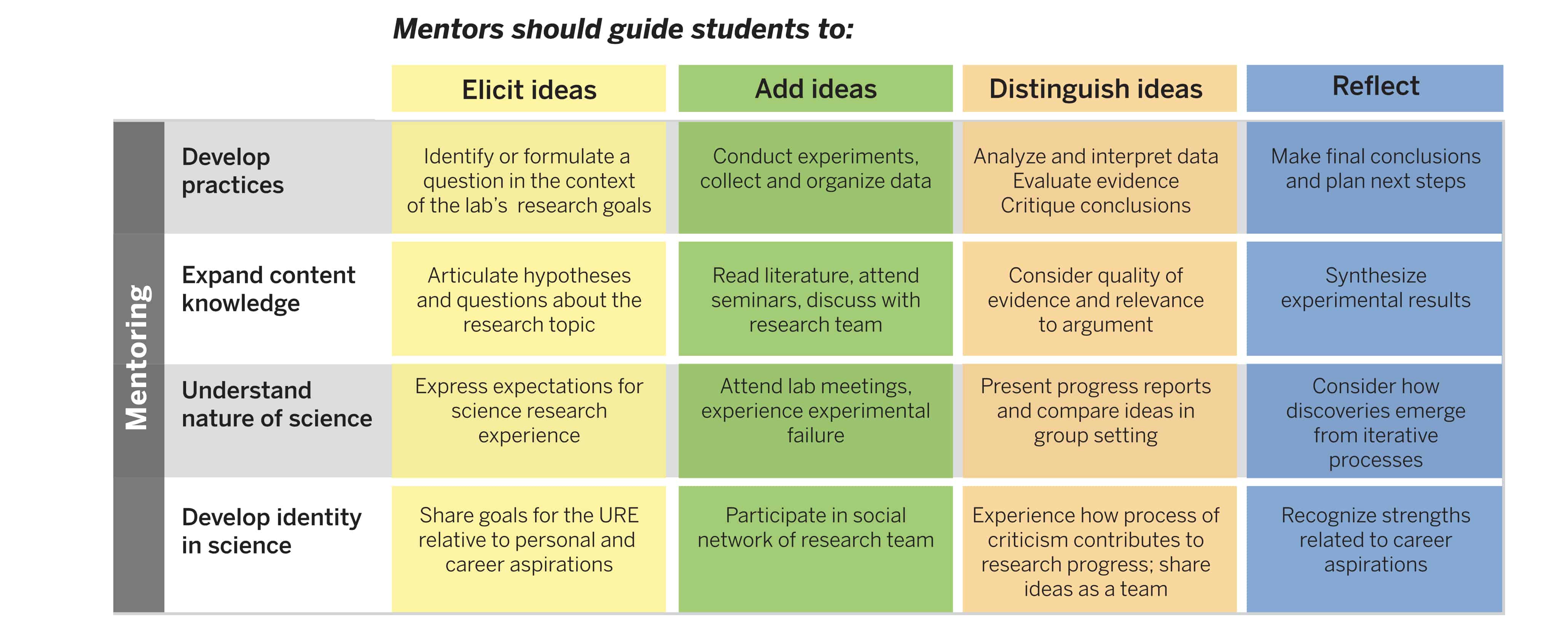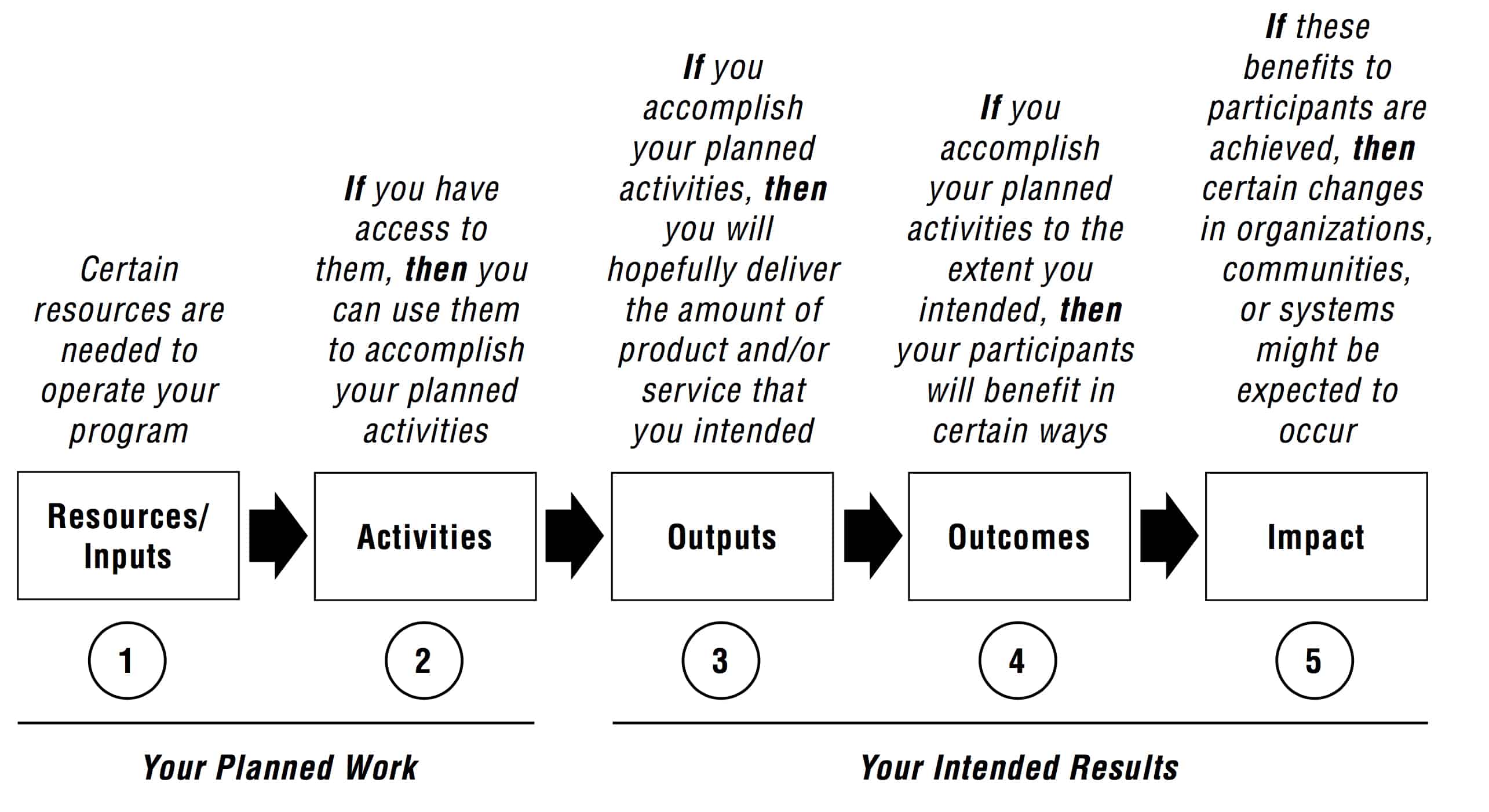- June 24, 2017
- Posted by: Team SAi
- Categories: Case Study, Research

Fanuel Muindi | Co-Director, Stem Advocacy Institute (SAI)
Abstract
Grad Spark is a Boston based organization that is driven to provide a “platform to help students of color in doctoral programs develop a network and a roadmap for the path forward in research based careers.” Here, Grad Spark programming is used as a case study to discuss mentorship programs in STEM. The utilization of a logic model is suggested for all programs to further enhance the impact of mentorship projects.
Introduction
Many colleges and universities in the US offer both summer and course based undergraduate research experiences. These programs are well recognized to be effective educational tools for increasing student interests in pursuing graduate studies [1-3]. For many programs, summer undergraduate research experience plays a critical role in the recruitment of more minority students applicants into graduate student programs. A fundamental focus for many of these programs is knowledge integration (Figure 1) through mentorship in developing research practices, expanding content knowledge, understanding the nature of science, and developing an identify in science [4]. As one would expect, the success of each program in integrating all the diverse aspects of mentoring varies considerably across programs.
|
Figure 1. A knowledge integration framework. Diagram from Linn et al., 2015 [4] |
Designing research programs that create experiences which provide students ample and consistent opportunities to explore the multiple dimensions of knowledge integration is not easy. It is very reasonable to assume that programs and courses which are able to provide the necessary knowledge integration, especially for minority students, are highly successful in having many of the summer trainees applying to and succeeding in graduate school and beyond. Minority students are of particular concern given the low numbers in many science and engineering doctoral programs [5]. Research experiences in the summer or during courses are among a plethora of efforts that now exist to try to fill the gap and assist in increase the number of minorities in graduate school. Given the difficulty in tackling the many dimensions of knowledge integration – and also the cost to run such on-campus programs – there are now many efforts which focus on only one or more of the key aspects of mentorship outside the bench. The most notable of those initiatives generally focus on the creation of a sense of community and advocating for minorities in science at the highest levels. These include national minority student conferences (SACNAS & ABRCMS), societies/networking platforms such as the Black Doctoral Network (BDN), National Research Mentoring Network (NRMN) and also many other local initiatives (e.g., seminars, graduate student groups, etc.) at the university level which all focus to contribute to knowledge integration at various stages of undergraduate training.
Is enough being done? The best answer to this question at the present moment is that more can be done and that there is space for others to join. Well, a relatively new organization (started operations in September 2016) is attempting to do their part. Known as The Grad Spark, it is a “platform that focuses on helping students of color in doctoral programs develop a network and a roadmap for the path forward in research based careers.” They state that their long-term mission is “to celebrate and empower millennial people of color in STEM.” They do this by providing platform for sharing experiences in science from minority students, providing forums for discussion on important issues pertinent to minority students, and more recently, providing an avenue for direct mentorship through the Grad Spark Accelerator program. The goal of this report is to provide a summary analysis of the Grad Spark organization. The report will provide feedback and suggestions on organization’s structure, goals, strategy, and several other important components. The hope is that the organization can use the questions we raise here to improve and further develop their initiatives.
Methods: Our Approach
We took a multipronged approach to acquiring and analyzing multiple data points to enable us to examine the Grad Spark. We sent out a survey to the organization to enable us to conduct an internal review. We also conducted an external review using data from the organization’s website (publications, reports, media, etc.) and also had discussions with the organization to get additional insight. We examined the organization’s clarification of the problem they are currently trying to address, the strategies being used so far to solve this problem, the type of data (if any) that is routinely collected, how success is measured, and some of the main challenges for the initiative.
Results and Discussion: Organization Mission and Structure
An organization’s mission statement is perhaps one of the most important aspects that should not be overlooked. It is extremely critical for mentorship driven programs. Good mission statements need to be clear, memorable, measurable, and concise.
As indicated online, the current stated mission for the Grad Spark “is to help students of color in doctoral programs develop a network and a roadmap for the path forward in research based careers.” It is essential that such a statement be easily found on the website. At the moment, this is not the case. Overall, the mission statement is satisfactory but there is room for improvement as is the case for all mission statements. The what in Grad Spark’s mission statement is to ‘develop a network and a roadmap’ and the who refers to the ‘students of color’. However, the how cannot be ascertained from the provided statement.
Consider the following mission statements which have differing strengths: People’s Science states that their mission is to “fill in the gaps of the educational system by improving the relationship between science, society, and the self.” Clubes de Ciencia states that their mission is to expand access to high quality science education and to inspire and mentor the future generation of scientists and innovators in Mexico through international scientific networks.” BIOEYES states that their mission is to “foster enthusiasm for science by offering students opportunities to explore life science through real world applications using a hands-on approach to learning.” Questions to consider: Are these mission statement clear, memorable, measurable, and concise? Is what they are proposing to do measurable? It is essential for science initiatives and organizations to have clear and concise mission statements which are measurable. The statements need to be reviewed frequently because all mission statements have built in assumptions that need to be challenged from time to time [6].
There is room for Grad Spark’s mission statement to integrate and articulate these important elements in-order for it to be inspiring and instructive. One example we suggest is as follows:
The Grad Spark is a platform that works to enhance minority doctoral student networks and roadmaps by developing innovative programming and tools to help students achieve success in research careers and beyond.
It is also crucial that the rationale behind the problem is articulated for the viewer. What is the problem you are trying to solve? What is your vision once the problem is solved? The latter requires a vision statement. Currently, both the problem and vision are not articulated on the website. It is recommended that this information be available somewhere on the website that viewers can easily find after reading the mission statement.
Group Structure
In his evaluation of our organization, Dr. Thomas Magaldi (Manager, Office of Career and Professional Development at the Memorial Sloan Kettering Cancer Center) stated that “one critical challenge that groups started by students and postdocs is the problem of succession planning.” He noted that typically, an organization is started by energetic postdocs and students. But when students and postdocs graduate or move forward in their careers, these organizations either die or go into a long hibernation. It is important to have plans in place to ensure that the group sustains itself both through funding and its core staff. Questions to consider: What are the plans for group maintenance and succession?
Individual Project Analysis
Project 1: Platform for sharing experiences in science from minority students – Melanin Genius
Sharing experiences in science is an area that is rapidly growing. There are a number of platforms that have been created to focus on sharing the many experiences that scientists and also trainees go through in science. They include People Behind the Science, Story Collider, I am a scientist: Get me out of here, I am A Scientist, The Open Notebook and Stories in Science. These initiatives overall are challenging the belief about the necessity of exceptional scientific talent to succeed in STEM, which has been shown to negatively impact the motivation of students to learn in science classes [7]. Such beliefs impede efforts to increase the number of students, especially minorities, in pursuing STEM subjects. The Melanin Genius platform hosted by the Grad Spark almost exclusively focuses on stories from minority graduate students across the country. The platform asks a wide array of questions including the following:
What’s next for you? What do you do to unwind? Tell us about your graduate research. What motivated you to pursue this line of research? What is the coolest thing about your research? What is the most challenging part of research for you? Why did you choose to go to grad school? Do you ever feel discouraged? How do you get around that? Who are some of you biggest cheerleaders? What has been the most useful life advice you have received? What do you want to say to upcoming melanin genius?
With such a wide array of questions, readers are able to get a deep perspective into the paths that individual trainees have taken so far. The important thing here is that the stories focus on the trainees. Recommendations: It is important to articulate what the goals and motivations behind the Melanin Genius platform given the growing diversity of platforms in this space. Currently, this is not easy to fully discern on the website. The motivations and goals need to be the first thing that viewers see to orient them accordingly. Search functionality: For platforms such as this, it is critical to enable a detailed search functionality for the stories that have been collected so far. It would be useful for viewers to search by field, year of study, schools, sex, and several other categories. As the database grows, this functionality will be critical. Impact Assessment: Another important aspect of the stories is the impact of the stories on those viewing them. Are the stories useful to the viewers? How do the viewers use them? What is the impact of the stories on the readers and what comparison is necessary to show this? We recommend having an assessment plan that will provide a detailed window into the impact of the whole initiative. Overall, we also do suggest thinking creatively about ways to integrate such stories into the existing NIH supported programs that are already working with minority students across several levels. We think the stories you have collected so far would be powerful to share more widely. These programs include Bridges to the Baccalaureate, Bridges to the Doctorate, IMSD, IRACDA, IPERT, MARC U-STAR, RISE, BUILD, and PREP just to name a few.
Program 2: Providing an online forum for discussion on important issues pertinent to minority students (blog)
As stated on the website, the main focus for the blog is to provide an avenue for talking about the graduate school journey. Discussion points range from general thoughts, struggles, victories, questions and several other topics. The publications in the blog closely resemble the stories published within the melanin genius domain which suggests that consolidating the two domains may prove fruitful. One of the advantages of consolidating is that it makes it easier for the viewer to navigate the stories if they are all in one place. Again, it is also important that the database be searchable across the several domains as mentioned previously.
Program 3: Providing an avenue for direct mentorship through the Grad Spark Accelerator program
As stated online, “the Grad Spark accelerator program is “a 12-week online summer mentoring program to help students applying to academic and professional graduate degrees put together strong applications and get into the graduate school of their dreams.” The program is now positioned to be a center piece of what Grad Spark does. For the 2017 cohort, students are provided with opportunities for mentorship and networking all without relocating. Students are paired with mentors who meet once a week during the 12-week curriculum. Mentors are tasked to focus on the academic and personal development of students. The cohort get access to weekly webinars, on-demand videos, and access to admissions officers among others. Topics include individual development plan creation, graduation school application material overview and general strategizing. For the 2018 cohort, the Grad Spark aims to provide mentees with “thorough and actionable feedback on their entire graduate school application package, as well as access to discounted GRE/GMAT prep materials all for a very low price.”
As mentioned previously, mentorship is an important aspect of training. There are a number of programs that focus on mentorship. They include the well-established National Research Mentoring Network (NRMN), the Atlanta Society of Mentors, the Leadership Alliance, and BUILDing SCHOLARS mentoring program at the University of Texas at El Paso Texas just to name a few. The NRMN deserves particular mention because it “is a nationwide consortium of biomedical professionals and institutions collaborating to provide trainees with evidence-based mentorship and professional development programming.” The network consists of undergraduate students, graduate students, postdocs, faculty, non- faculty researchers, and also academic administrators which altogether number in the thousands.
As is the case for any new program, it is important to assess how the Grad Spark Accelerator program is different to programs that already exist such as the federally funded NRMN. Important questions to ask: What makes the Grad Spark Accelerator program unique? Is there a way to collaborate with NRMN and other existing mentoring programs? What is the long-term plan for the accelerator program? What are the expected outputs? How are mentors trained, evaluated, and retained? Beyond money, what other ways could be used to encourage mentors to stick around? Are there funding opportunities you could apply for so that your services could be completely free to students? Additionally, what systems are in place to measure the intended outcomes and impact? These are just some of the many questions that need to have answers. Making sure that there are mechanisms in place to measure your outcomes and impact is essential. It is important to (i) know whether you are on target to reach your goals and (ii) whether mid-course corrections are required.
General Discussion
Is enough being done in the mentorship space? As discussed in the introduction, the answer to this question at the present moment is that more can surely be done and that there is space for others to join and contribute. The important question here then is how should an organization work to contribute to the ongoing efforts? Does it make sense to start a new initiative entirely or should one collaborate with an existing effort? Answers to these questions require deep comparisons between what is already in place and what is being proposed. Given limitations on funding and time, more often than not, it makes more sense to collaborate with existing efforts. We think that donors are more willing to provide funds to initiatives that are unique or are innovative in leveraging the existing network of resources that are already available. The Grad Spark Accelerator program overlaps extensively with NRMN. We feel that this is actually the case for many initiatives. Perhaps the question then is whether opportunities exist for Grad Spark to build an innovative collaboration with NRMN or other mentorship focused groups that are in the Boston area. The answer to this question will first depend on the ability of the Accelerator Program to clearly articulate its core functions and what’s truly innovative about its approach. Possible avenues for differentiation include focusing exclusively on minorities, a specific geographical area like Boston, or a specific research area both for mentees and mentors. Identifying a niche that the Accelerator program can serve is critical moving forward.
There is a need for Grad Spark and other mentorship focused initiatives and organizations to cultivate a logic model as shown in Figure 2. A logic model describes graphically the short- and long-term outcomes for specific program activities and the associated theoretical assumptions [8]. This is important as the logic map describes the connections between what has been planned versus the intended program goals. It also provides a powerful framework to think critically about the intended impact and exposes many of the assumptions that may be operating for specific programs.
|
Figure 2. Example logic model from the Logic Model Development Guide by the W.K Kellog Foundation [8] |
Overall, the Grad Spark is driven by its goal to provide a platform to help students of color in doctoral programs develop networks and roadmaps for the path forward in research based careers and beyond. We believe there is a great opportunity for the Grad Spark and other similar programs to use the Accelerator program to help mentors integrate the framework mentioned in Figure 1. Given the focus on applying to graduate school, it is important for mentees to be able to articulate the several parts of the knowledge integration framework. In summary, the Grad Spark is very early in its programming and will undoubtedly continue to improve its programs moving forward. We urge the Grad Spark and other similar programs to continue to develop and enhance mentorship networks for trainees in science and beyond.
References
- Lopatto, D. Survey of Undergraduate Research Experiences (SURE): First Findings. Cell Biol. Educ. 3, 270–277 (2004). doi: 10.1187/cbe.04-07-0045
- Michigan State University 2015 Undergraduate Research Survey Part I : Who are our Undergraduate Researchers ? 1–7 (2015).
- Franke, R., Ruiz, S., Sharkness, J., DeAngelo, L. & Pryor, J. Findings from the 2009 Administration of the College Senior Survey (CSS): National Aggregates. 1–117 (2010). https://www.heri.ucla.edu/PDFs/pubs/Reports/2009_CSS_Report.pdf
- Linn, M. C., Palmer, E., Baranger, A., Gerard, E. & Stone, E. Undergraduate research experiences: Impacts and opportunities. Science (80-. ). 347, 1261757–1261757 (2015). http://science.sciencemag.org/content/347/6222/1261757
- Estrada M, Burnett M, Campbell AG, Campbell PB, Denetclaw WF, Gutiérrez CG, Hurtado S, John GH, Matsui J, McGee R, Okpodu CM, Robinson TJ, Summers MF, Werner-Washburne M & Zavala M. Improving underrepresented minority student persistence in stem. CBE Life Sci. Educ. 15, 1–10 (2016). doi: 10.1187/cbe.16-01-0038.
- STEM Education Advocacy Group. Mission Statement Matters – STEM Education Advocacy Group. (2017). Available at: https://saicollective.org/2017/01/mission-statement-matters/. (Accessed: 22nd June 2017)
- Lin-Siegler, X., Ahn, J. N., Chen, J., Fang, F.-F. A. & Luna-Lucero, M. Even Einstein struggled: Effects of learning about great scientists’ struggles on high school students’ motivation to learn science. J. Educ. Psychol. (2016). doi:10.1037/edu0000092 | https://www.apa.org/pubs/journals/releases/edu-edu0000092.pdf
- Foundation, W. K. K. W.K. Kellogg Foundation Logic Model Development Guide. Development 72 (2004). | https://www.bttop.org/sites/default/files/public/W.K.%20Kellogg%20LogicModel.pdf


